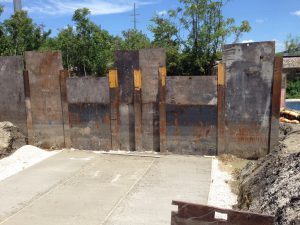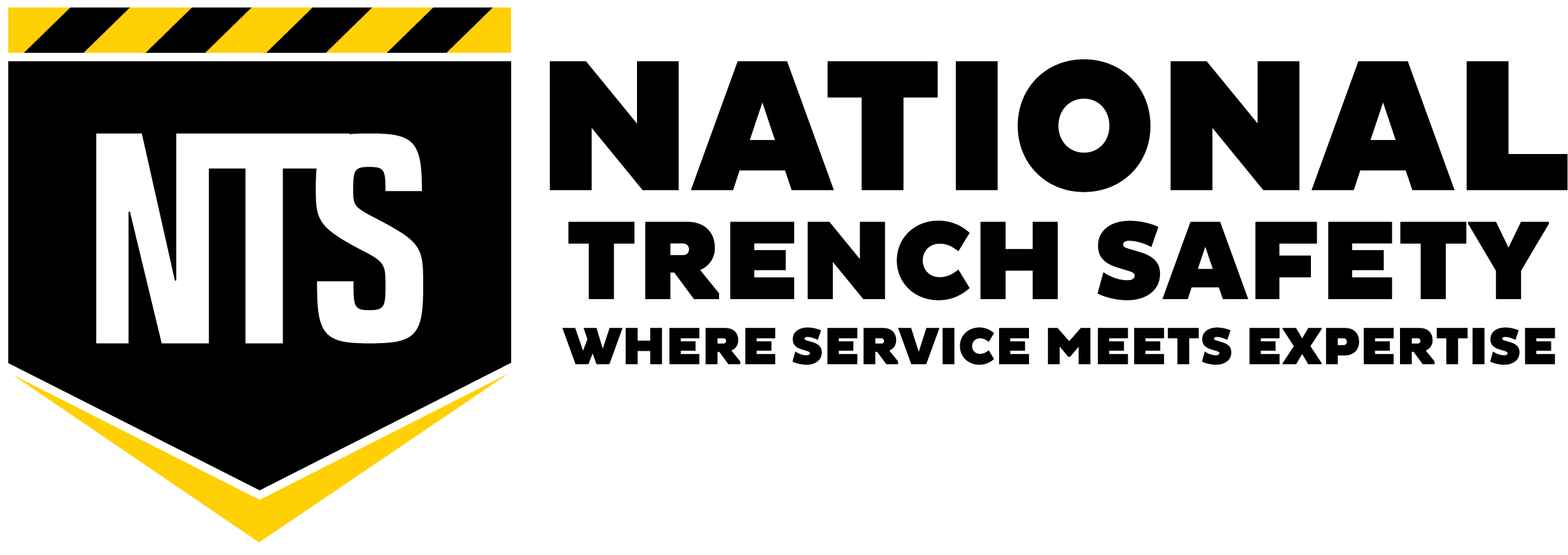Cantilevered Beam and Plate System Used Along Railroad
A contractor had been engaged to upgrade a water and sewer infrastructure bordering a railroad in South Texas. This particular phase of the project required boring beneath a railroad to install a twin 84-in steel pipe culvert and perform a pour-in-place headwall. The planned bore pit would require soil protection for approximately 67-ft wide, 20-ft long, and 15-ft deep classified as Type C-60 soil. The bore was placed in a sensitive area adjacent to an active railroad, which required additional precaution. The contractor not only had to estimate the surcharge loads caused by the active rail line but also account for the safety of the workers.
The contractor contacted NTS to discuss their concerns and objectives for the project and ultimately selected a site-specific engineered cantilevered beam and plate system. The system is designed with steel beams that are pushed below the bottom of the excavation and set in intervals for structural strength. The spacing is done, so that steel plates are inserted within the channels of the beams. The steel plates transfer the strength of the steel beams across the excavation span to prevent soil from coming into the excavation. The beams are typically either driven into the ground or pushed into pre-drilled pilot holes according to an engineer’s plan. With the beam and plate system in place, the contractor could safely install the new twin culvert. Once the project is completed the drainage of the area will be greatly improved for years to come. The contractor was pleased with the simple installation process of the beam and plate system as well as the system’s ability to protect the integrity of the site.
pre-drilled pilot holes according to an engineer’s plan. With the beam and plate system in place, the contractor could safely install the new twin culvert. Once the project is completed the drainage of the area will be greatly improved for years to come. The contractor was pleased with the simple installation process of the beam and plate system as well as the system’s ability to protect the integrity of the site.





